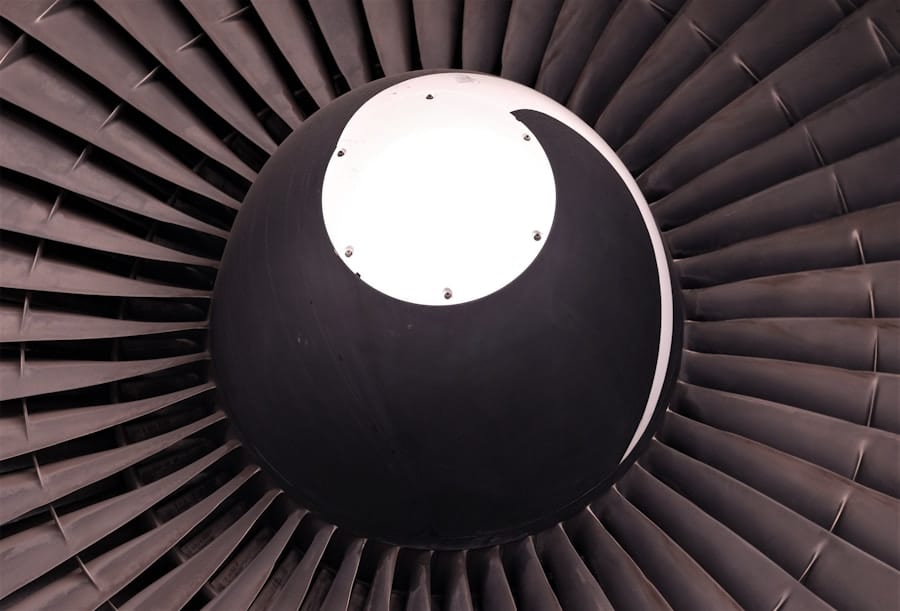The aerospace industry has long been at the forefront of technological innovation, and the integration of artificial intelligence (AI) into materials engineering represents a significant leap forward.
This intersection of AI and materials science is not merely a trend; it is a paradigm shift that promises to enhance performance, reduce costs, and improve safety in aircraft design and manufacturing.
In aerospace materials engineering, the complexity of materials selection and the need for high-performance characteristics are paramount. Traditional methods of material development often involve extensive trial and error, which can be time-consuming and costly. However, with AI, engineers can leverage machine learning algorithms to predict material behaviors under various conditions, optimize compositions, and even discover new materials that meet specific performance criteria.
This capability not only accelerates the development process but also opens up new avenues for innovation in aerospace applications.
Key Takeaways
- AI is revolutionizing aerospace materials engineering by enabling advanced smart coatings and materials with enhanced properties.
- The integration of AI in aerospace materials design and development is leading to faster and more efficient processes, resulting in improved aircraft performance and durability.
- AI and smart coatings are being integrated into aircraft maintenance to enable predictive maintenance, reducing downtime and enhancing safety.
- The future of AI in aerospace materials engineering presents both challenges and opportunities, including ethical and safety considerations that need to be addressed.
- The potential of AI and smart coatings in shaping the future of aerospace materials engineering is immense, with ongoing trends and innovations driving continuous advancements in the field.
Advancements in Smart Coatings and Aerospace Materials
Smart coatings represent one of the most exciting advancements in aerospace materials engineering, combining traditional material properties with advanced functionalities. These coatings can respond to environmental stimuli, such as temperature changes or mechanical stress, thereby enhancing the performance and longevity of aircraft components. For instance, self-healing coatings can automatically repair minor damages caused by wear or impact, significantly extending the lifespan of critical components like wings and fuselage sections.
Recent developments in smart coatings have been driven by the integration of nanotechnology and advanced polymers. Researchers are exploring the use of nanomaterials to create coatings that not only provide protection against corrosion and wear but also possess additional functionalities such as anti-icing or anti-fouling properties. For example, a coating that prevents ice accumulation on wings can improve aircraft performance during winter operations, enhancing safety and efficiency.
The combination of AI with these smart coatings allows for real-time monitoring and adaptive responses to changing conditions, further optimizing aircraft performance.
Impact of AI on Aerospace Materials Design and Development
AI’s impact on aerospace materials design is profound, fundamentally altering how engineers approach material selection and optimization. Machine learning algorithms can analyze historical data from previous material tests to identify trends and correlations that may not be immediately apparent to human researchers. This capability enables engineers to make informed decisions about which materials to pursue for specific applications based on predictive analytics rather than solely relying on empirical data.
Moreover, AI-driven simulations can model the behavior of materials under various conditions, allowing for virtual testing before physical prototypes are created. This not only reduces the time and cost associated with material development but also enhances the accuracy of predictions regarding material performance. For instance, AI can simulate how a new composite material will behave under extreme temperatures or pressures, providing insights that guide further refinement of the material’s composition or structure.
Integration of AI and Smart Coatings in Aircraft Maintenance
The integration of AI with smart coatings is revolutionizing aircraft maintenance practices. Traditional maintenance schedules often rely on fixed intervals or visual inspections, which can lead to either over-maintenance or under-maintenance of aircraft components. However, smart coatings equipped with sensors can provide real-time data on the condition of surfaces, allowing for condition-based maintenance strategies that optimize resource allocation and minimize downtime.
For example, a smart coating embedded with sensors could monitor stress levels on an aircraft wing during flight. If the sensors detect anomalies that suggest potential failure points, maintenance crews can be alerted to inspect those areas specifically rather than conducting blanket inspections across the entire aircraft. This targeted approach not only saves time but also enhances safety by ensuring that critical components are monitored closely without unnecessary disruption to operations.
Challenges and Opportunities in the Future of AI in Aerospace Materials Engineering
Despite the promising advancements brought about by AI in aerospace materials engineering, several challenges remain. One significant hurdle is the need for high-quality data to train machine learning models effectively. In many cases, historical data may be incomplete or inconsistent, which can lead to inaccurate predictions and suboptimal material choices.
Additionally, the aerospace industry is highly regulated, meaning that any new materials or processes must undergo rigorous testing and certification before they can be implemented in commercial applications. However, these challenges also present opportunities for innovation. The demand for more efficient and sustainable materials is driving research into alternative sources of data collection, such as real-time monitoring systems that gather information during actual flight operations.
Furthermore, collaborations between academia, industry, and regulatory bodies can facilitate the development of standardized testing protocols that ensure new materials meet safety requirements while also leveraging AI’s capabilities.
Future Trends and Innovations in AI and Smart Coatings for Aerospace Applications
Sustainability Takes Center Stage
As environmental concerns grow, there is a push for materials that not only perform well but also have a reduced ecological footprint. AI can play a crucial role in identifying sustainable materials or optimizing existing ones to minimize waste during production.
Additive Manufacturing Revolutionizes Aerospace Materials Engineering
The rise of additive manufacturing (3D printing) in aerospace materials engineering is another significant trend. The combination of AI with 3D printing technologies allows for the creation of complex geometries that were previously impossible with traditional manufacturing methods.
Integrating Smart Coatings into 3D-Printed Components
Smart coatings can be integrated into these 3D-printed components during production, resulting in parts that are not only lightweight but also equipped with advanced functionalities from the outset.
Ethical and Safety Considerations in AI-driven Aerospace Materials Engineering
As with any technological advancement, the integration of AI into aerospace materials engineering raises important ethical and safety considerations. The reliance on AI for critical decision-making processes necessitates a thorough understanding of its limitations and potential biases. Engineers must ensure that machine learning models are trained on diverse datasets to avoid skewed results that could compromise safety.
Moreover, the use of smart coatings equipped with sensors raises questions about data privacy and security. As these coatings collect real-time data about aircraft performance and conditions, safeguarding this information from unauthorized access becomes paramount. Establishing robust cybersecurity measures will be essential to protect sensitive data while ensuring that maintenance crews have access to the information they need to make informed decisions.
The Potential of AI and Smart Coatings in Shaping the Future of Aerospace Materials Engineering
The potential of AI and smart coatings in shaping the future of aerospace materials engineering is immense. By harnessing the power of artificial intelligence, engineers can develop innovative materials that enhance performance while reducing costs and environmental impact.
As we continue to explore the possibilities presented by AI in this field, it is crucial to address the challenges head-on while remaining vigilant about ethical considerations. The future of aerospace materials engineering will undoubtedly be defined by these advancements, paving the way for safer, more efficient aircraft that meet the demands of an ever-evolving industry landscape.
In addition to exploring The Future of AI in Aerospace Materials Engineering and Smart Coatings, tax preparers may benefit from reading about the best software options to streamline their workflow and increase accuracy. This article provides valuable insights into selecting the right tools for tax preparation.
FAQs
What is AI in aerospace materials engineering and smart coatings?
AI in aerospace materials engineering and smart coatings refers to the use of artificial intelligence to develop and improve materials and coatings used in aerospace applications. This includes using AI to optimize material properties, develop new materials, and create smart coatings with advanced functionalities.
How is AI being used in aerospace materials engineering?
AI is being used in aerospace materials engineering to analyze large datasets, predict material behavior, optimize material properties, and accelerate the materials development process. AI algorithms can also be used to design new materials with specific properties and to simulate material performance under different conditions.
What are smart coatings in aerospace applications?
Smart coatings in aerospace applications are advanced coatings that have additional functionalities beyond traditional protective coatings. These functionalities can include self-healing properties, corrosion resistance, temperature regulation, and sensing capabilities. Smart coatings can be designed to improve the performance and durability of aerospace components.
How is AI being used to develop smart coatings?
AI is being used to develop smart coatings by enabling the design of coatings with specific functionalities and properties. AI algorithms can analyze the requirements of a particular aerospace application and optimize the composition and structure of the coating to meet those requirements. AI can also be used to predict the performance of smart coatings under different operating conditions.
What are the potential benefits of AI in aerospace materials engineering and smart coatings?
The potential benefits of AI in aerospace materials engineering and smart coatings include accelerated materials development, improved material performance, reduced costs, and enhanced functionality of aerospace components. AI can also enable the development of innovative smart coatings that can improve the efficiency and safety of aerospace systems.



